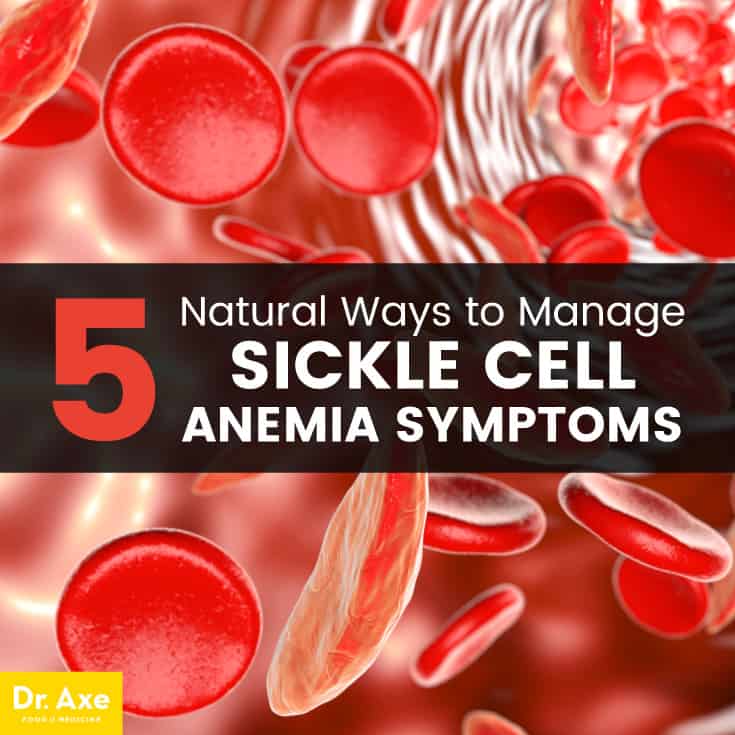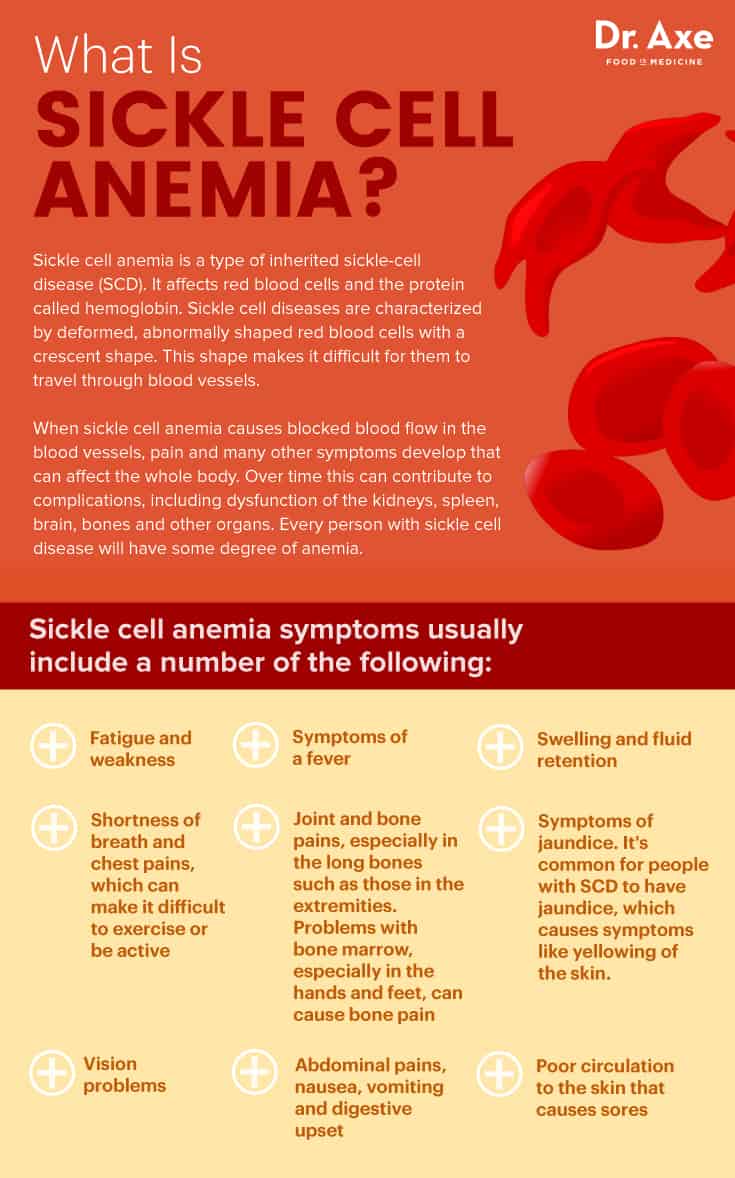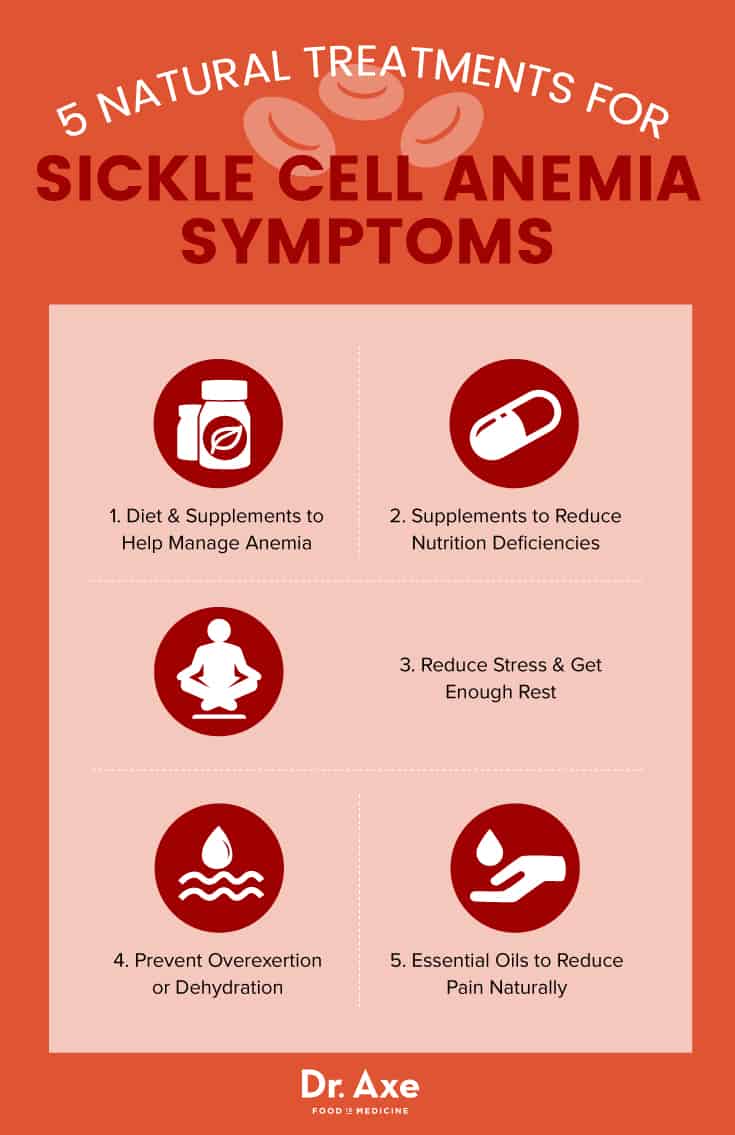This Dr. Axe content is medically reviewed or fact checked to ensure factually accurate information.
With strict editorial sourcing guidelines, we only link to academic research institutions, reputable media sites and, when research is available, medically peer-reviewed studies. Note that the numbers in parentheses (1, 2, etc.) are clickable links to these studies.
The information in our articles is NOT intended to replace a one-on-one relationship with a qualified health care professional and is not intended as medical advice.
This article is based on scientific evidence, written by experts and fact checked by our trained editorial staff. Note that the numbers in parentheses (1, 2, etc.) are clickable links to medically peer-reviewed studies.
Our team includes licensed nutritionists and dietitians, certified health education specialists, as well as certified strength and conditioning specialists, personal trainers and corrective exercise specialists. Our team aims to be not only thorough with its research, but also objective and unbiased.
The information in our articles is NOT intended to replace a one-on-one relationship with a qualified health care professional and is not intended as medical advice.
Sickle Cell Anemia + 5 Natural Treatments to Manage Symptoms
July 22, 2017

The Centers for Disease Control (CDC) estimates that sickle cell diseases (SCD), especially sickle cell anemia, affects around 100,000 Americans. Sickle cell anemia is a type of inherited sickle-cell disease. It affects red blood cells and the protein called hemoglobin. Because it’s an inherited disorder, sickle cell anemia is different than other types of anemia, as it runs in families and is passed down from parents to their offspring.
African Americans are most likely to have sickle cell diseases; some research shows that up to 10 percent of African Americans living in the United States have one copy of the gene that causes sickle cell disease. According to the CDC, “SCD occurs among about 1 out of every 365 Black or African-American births, and 1 out of every 16,300 Hispanic-American births.” (1)
Of all the sickle cell diseases, sickle cell anemia tends to cause the most severe symptoms, limitations and disability. As of now there is no “cure” for sickle cell anemia; however, there are lots of treatment options for managing symptoms and reducing complications — including infections, fevers, kidney dysfunction and others.
Many people with sickle cell anemia or other types of sickle cell diseases develop nutrient deficiencies due to problems with absorption and digestion in general. According to a 2010 report published in the journal Nutrition and Metabolic Insights, “It is becoming clearer that recommended dietary allowances (RDAs) for the general population are insufficient for the sickle cell patient.” (2) A significant percentage of sickle cell anemia patients will deal with deficiencies in nutrients including iron, zinc, copper, folic acid, pyridoxine, vitamin D and vitamin E. A well rounded, nutrient-dense diet is important for preventing complications due to sickle cell anemia such as growth and development abnormalities, decreased bone density, higher risk for fractures, vision problems, higher susceptibility to infections, and others.
What Is Sickle Cell Anemia?
Sickle cell anemia, and other sickle cell diseases, are part of a group of “hemoglobinopathies.” Hemoglobinopathies develop when someone inherits at least one “defective” sickle (S) beta-globin gene from a parent, along with another type of abnormal hemoglobin gene that affects how red blood cells work. The most common types of sickle cell diseases include:
- sickle cell anemia (or HbSS)
- hemoglobin SC disease (or HbSC)
- and hemoglobin Sβ thalassemia (or HbSβthal)
Those who have any type of sickle cell disease produce abnormal hemoglobin. Hemoglobin is a protein in red blood cells. It normally carries oxygen throughout the body via the blood. The abnormal hemoglobin associated with SCD is referred to as “hemoglobin S” or “sickle hemoglobin.” (3) Sickle cell diseases are characterized by deformed, abnormally shaped red blood cells with a crescent shape. This shape makes it difficult for them to travel through blood vessels. Normally, red blood cells are flexible and “disc shaped” (appearing round). They have a thicker edge and shallow middle. The disc shape allows them to easily pass through small blood vessels. However, sickle-shaped red blood cells are typically stiffer and more fragile, causing them to break or become lodged. This can then block blood flow while reducing oxygen supply throughout the body.
Not every red blood cell will be sickle-shaped when someone has SCD. But the more the disease progresses over time, the higher the number of cells that will become deformed. Sickle cell anemia will cause red blood cells to die in about 10 to 20 days, as opposed to about 120 days in people without the disease. This causes the patient to have a shortage of red blood cells (anemia) and lack of oxygen throughout their body.

Common Signs and Symptoms of Sickle Cell Anemia
When sickle cell anemia causes blocked blood flow in the blood vessels, pain and many other symptoms develop that can affect the whole body. Over time this can contribute to complications, including dysfunction of the kidneys, spleen, brain, bones and other organs. Every person with sickle cell disease will have some degree of anemia. However, this can occur on a spectrum with some cases being more severe than others. Some with sickle cell diseases have few symptoms and lead a productive life. Others develop severe symptoms and limitations.
Sickle cell anemia symptoms usually include a number of the following:
- Fatigue and weakness
- Symptoms of a fever
- Swelling and fluid retention
- Shortness of breath and chest pains, which can make it difficult to exercise or be active
- Joint and bone pains, especially in the long bones such as those in the extremities. Problems with bone marrow, especially in the hands and feet, can cause bone pain.
- Abdominal pains.
- Vision problems.
- Nausea, vomiting and digestive upset.
- Poor circulation to the skin that causes sores.
- Symptoms of jaundice. It’s common for people with SCD to have jaundice, which causes symptoms like yellowing of the skin.
- Enlargement of the spleen (including during childhood), which over time can cause the spleen to become damaged and shrunken.
- Higher risk for infections and illnesses, including pneumococcal pneumonia, partially due to the spleen not working properly.
- Higher risk for blood clots due to a blocked blood vessel.
- Higher risk for liver damage, kidney damage, lung damage and gallstones.
- Sexual dysfunction, including painful erections.
- In children, developmental problems may occur such as shortening of the torso in proportion to the arms and legs.
- Higher risk for stroke, seizures and symptoms like numbness in the limbs, difficulty speaking and loss of consciousness.
- Higher risk for enlargement of the heart and heart murmurs.
Sickle Cell Anemia Causes and Risk Factors
Sickle cell anemia is a genetic disorder. The inheritance of certain genes, rather than lifestyle or dietary factors, causes it. In order for a child to acquire sickle cell anemia, he or she must inherit defective genes from both parents. This means that SCDs are “autosomal recessive inheritance diseases.” When a child inherits a defective gene from only one parent, he or she will carry the sickle cell disease trait but will not display full symptoms. Some of their red blood cells and hemoglobin will be normal. Others will be deformed. (4)
Most people who have the sickle cell anemia trait, but not the disease, don’t display many symptoms. They are typically able to live a normal/healthy life. However, they can pass on the defective gene to their own child. Therefore they may choose to do genetic testing with their partner before conceiving.
Conventional Treatment for Sickle Cell Anemia
Doctors can perform a type of blood test called electrophoresis to determine if someone has a sickle cell disease. This test separates different types of hemoglobin to detect if some are abnormally shaped. Doctors may suspect sickle cell disease in people with a family history, especially if they are experiencing symptoms like fever, fatigue, stomach pains, bone pains and nausea. Because sickle cell disease cannot typically be cured, the goal of treatment is usually to prevent “sickle cell crisis” and reduce symptoms to improve quality of life. (5)
If a sickle cell crisis or emergency occurs, patients usually need to stay in the hospital and be monitored while receiving fluids and medications. The most obvious symptom will be pain, including sudden, dull, stabbing, throbbing or sharp pains in the abdomen and chest. The patient may need oxygen, as well as a blood transfusion in some cases. Other treatments can include:
- Hydroxyurea medication — increases production of a form of hemoglobin that helps prevent red blood cells from becoming sickle shaped.
- Bone marrow transplant — bone marrow or stem cells may be taken from a family member who doesn’t have the disease and transplanted to the patient. This can be a risky procedure. It requires taking medications that suppress the immune system, preventing the body from “fighting” the transplanted cells.
- Gene therapy — this is done by implanting genes in precursor cells that produce normal red blood cells.

5 Natural Treatments for Sickle Cell Anemia Symptoms
1. Diet & Supplements to Help Manage Anemia
Eating a certain type of diet will not help cure sickle cell anemia or prevent it, but it can help to manage symptoms and prevent further complications. Those with sickle cell anemia may have a harder time digesting protein (amino acids) and many different micronutrients, sometimes leading to malnutrition, weight loss and many side effects as a result.
Here are tips to focus on in order to help you meet all your nutritional needs:
- Be sure to eat enough calories in general. Sickle cell anemia can sometimes cause malabsorption and higher caloric needs to prevent weight loss.
- Eat a nutrient-dense diet that includes variety and plenty of fresh produce (fruits and veggies). Try including colorful fruits and vegetables with every meal to get enough vitamins, minerals and antioxidants. Some of the best choices include: all leafy green veggies, chard, carrots, mushrooms, asparagus, tomatoes and bell peppers.
- Eat enough protein and healthy fats. Good sources of healthy proteins include: grass-fed beef, cage-free eggs, wild caught fish like salmon or sardines, liver or organ meats, lentils, or collagen protein. These foods are also high in iron. This helps to reduce anemia symptoms like fatigue or weakness. Healthy fats include: coconut oil or milk, olive oil, avocado, nuts, seeds, grass-fed butter and ghee.
- Consume foods high in folate, which helps with the production of red blood cells. These include: chickpeas, pinto beans, lentils, spinach, liver and organs meat, avocado, beets, broccoli and asparagus. Your doctor might also recommend taking a folate or folic acid supplement to help with this and prevent folate deficiency. However, a healthy diet is the best way to obtain folate the body can most easily use.
- Consume 100 percent whole/ancient grains, legumes or beans (if you tolerate them well) and animal sources of protein to get enough B vitamins.
- Drink enough water every day to prevent electrolyte imbalances and symptoms of dehydration. Aim for eight glasses per day, or even more if you’re sweating a lot or exercising.
- Avoid eating processed/packaged foods and empty calories like sugary foods, refined grains, fast foods, and sweetened drinks.
2. Supplements to Reduce Deficiencies
In addition to eating a healthy, varied diet, experts recommend taking several supplements that can treat deficiencies, protect bones and provide other protective effects. Overall, more research is still needed to confirm which supplements might be most useful. But for now, the following seem to offer benefits when taken in moderate dosages:
- Vitamin D (in addition to producing some naturally by exposing your skin to direct sunlight)
- Calcium
- Folate/folic acid
- Omega 3 fatty acids
- Vitamin B6 and B12
- Multivitamins that include copper, zinc and magnesium have also been found to be beneficial
3. Reduce Stress & Get Enough Rest
Depending on the person’s symptoms, it’s still possible to stay active and exercise even with sickle cell anemia. However, exercise might need to be gentle or moderate rather than vigorous. Balance exercise with plenty of rest and sleep. It’s best to get a doctor’s opinion about how much exercise is best.
In order to help the body recover from exercise and other sources of stress, whether physical or emotional, sleep for at least 7–9 hours per night. Also, put aside time during the day to unwind and relax. Other relaxing ways to help you cope with stress can include a meditation practice, yoga, breathing exercises, acupuncture, massage therapy or aromatherapy.
4. Prevent Overexertion or Dehydration
One of the most important things someone with sickle cell anemia can do is prevent the amount of oxygen in their blood from dropping to very low levels by avoiding overexertion and very physically stressful situations. Sickle cell disease is rarely deadly. But in some cases, when someone becomes very fatigued or dehydrated due to strenuous activity (such as athletic training or military training), it’s possible for symptoms to suddenly become severe and life-threatening. “Sickle cell crisis” is the term for a severe reaction due to reduced oxygen supply. This can be caused by anything that is very physically demanding and stressful for the body to handle, such as very vigorous exercise, spending time at very high altitudes (such as mountain climbing or flying), or when recovering from an illness.
5. Essential Oils to Reduce Pain Naturally
Sickle cell anemia can cause pains including joint stiffness, muscle weakness, bone pain and abdominal or chest pain. Using over-the-counter pain-killers often is not recommended because they can negatively affect kidney and/or liver function. To manage pain naturally, try applying warm compresses to painful areas for about 15 minutes at a time up to 2–3 times daily. Taking warm baths or sitting in a hot tub/jacuzzi, massage therapy, stretching or seeing a physical therapist are also good ways to help keep physical symptoms from becoming overwhelming.
Essential oils are also a great way to treat pain, in addition to treating irritated skin, improving immunity and promoting relaxation. Peppermint essential oil can be applied over the skin to reduce sore muscles or joints. Other essential oils for helping with symptoms include frankincense to reduce inflammation; lavender to help manage stress; and uplifting citrus oils like orange or grapefruit for helping to decrease fatigue.
Precautions Regarding Sickle Cell Anemia
Because people with sickle cell anemia have a higher risk for developing infections and illnesses, along with a harder time overcoming them, it’s important to seek treatment right away if symptoms start appearing. To help prevent illnesses, take precaution by practicing good hygiene. Stay away from people who are sick and wash your hands regularly. Also, try to avoid very stressful situations, extreme temperatures (too hot or too cold) or very vigorous exercise. Make it a priority to get good sleep and drink enough water.
For people with sickle cell diseases, getting the best care often comes from working with a team of specialists. This might include a primary care doctor, hematologist (a doctor who specializes in blood diseases), sometimes a physical therapist, and in many cases a dietician/nutritionist to help with meeting dietary needs. (6) Visit a doctor right away if any of the following signs and symptoms develop (especially in children):
- Developing a fever above 101° F
- Having difficulty breathing or pains in the chest and abdomen
- Severe headaches, vision changes and trouble concentrating
- Seizures
- Or painful erections that last more than 4 hours
Final Thoughts on Sickle Cell Anemia
- Sickle cell anemia is the most common and severe type of sickle cell disease (SCD). It causes abnormal hemoglobin. Hemoglobin is a protein found in red blood cells. It normally carries oxygen throughout the body.
- Symptoms of sickle cell anemia include fatigue, fevers, shortness of breath, weakened immune system, growth and developmental problems, malnutrition, weight loss and others.
- While the disease can’t be completely cured, treatments to help manage symptoms of sickle cell anemia include medications, a healthy diet, supplements, light exercise and stretching, essential oils, and getting plenty of rest.










